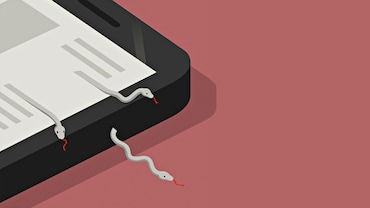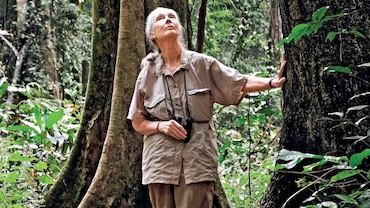Towards the Light
A call to heed, to walk away from the dark night of nuclear terror

I speak as a member of the family of hibakusha -- those of us who, by some miraculous chance, survived the atomic bombings of Hiroshima and Nagasaki. For more than seven decades, we have worked for the total abolition of nuclear weapons.
We have stood in solidarity with those harmed by the production and testing of these horrific weapons around the world. People from places with long-forgotten names, like Moruroa, Ekker, Semipalatinsk, Maralinga, Bikini. People, whose lands and seas were irradiated, whose bodies were experimented upon, whose cultures were forever disrupted.
We were not content to be victims. We refused to wait for an immediate fiery end or the slow poisoning of our world. We refused to sit idly in terror as the so-called great powers took us past nuclear dusk and brought us recklessly close to nuclear midnight. We rose up. We shared our stories of survival. We said: humanity and nuclear weapons cannot coexist.
Today, I want you to feel in this hall the presence of all those who perished in Hiroshima and Nagasaki -- a great cloud of a quarter million souls. Each person had a name. Each person was loved by someone. Let us ensure that their deaths were not in vain.
I was just 13 years old when the United States dropped the first atomic bomb, on my city Hiroshima. I still vividly remember that morning. At 8.15, I saw a blinding bluish-white flash from the window. I remember having the sensation of floating in the air.
As I regained consciousness in the silence and darkness, I found myself pinned by the collapsed building. I began to hear my classmates' faint cries: "Mother, help me. God, help me."
Then, suddenly, I felt hands touching my left shoulder, and heard a man saying: "Don't give up! Keep pushing! I am trying to free you. See the light coming through that opening? Crawl towards it as quickly as you can." As I crawled out, the ruins were on fire. Most of my classmates in that building were burnt to death alive. I saw all around me utter, unimaginable devastation.
Processions of ghostly figures shuffled by. Grotesquely wounded people, they were bleeding, burnt, blackened and swollen. Parts of their bodies were missing. Flesh and skin hung from their bones. Some with their eyeballs hanging in their hands. Some with their bellies burst open, their intestines hanging out. The foul stench of burnt human flesh filled the air.
Thus, with one bomb my beloved city was obliterated. Most of its residents were civilians who were incinerated, vaporized, carbonized -- among them, members of my own family and 351 of my schoolmates.
In the weeks, months and years that followed, many thousands more would die, often in random and mysterious ways, from the delayed effects of radiation. Still to this day, radiation is killing survivors.
Whenever I remember Hiroshima, the first image that comes to mind is of my four-year-old nephew, Eiji -- his little body transformed into an unrecognizable melted chunk of flesh. He kept begging for water in a faint voice until his death released him from agony.
To me, he came to represent all the innocent children of the world, threatened as they are at this very moment by nuclear weapons. Every second of every day, nuclear weapons endanger everyone we love and everything we hold dear. We must not tolerate this insanity any longer.
Through our agony and the sheer struggle to survive -- and to rebuild our lives from the ashes -- we became convinced that we must warn the world about these apocalyptic weapons. Time and again, we shared our testimonies.
But still some refused to see Hiroshima and Nagasaki as atrocities -- as war crimes. They accepted the propaganda that these were "good bombs" that had ended a "just war". It was this myth that led to the disastrous nuclear arms race -- a race that continues to this day.
Nine nations still threaten to incinerate entire cities, to destroy life on earth, to make our beautiful world uninhabitable for future generations. The development of nuclear weapons signifies not a country's elevation to greatness, but its descent to the darkest depths of depravity. These weapons are not a necessary evil; they are the ultimate evil.
On the seventh of July this year [2017], I was overwhelmed with joy when a great majority of the world's nations voted to adopt the Treaty on the Prohibition of Nuclear Weapons. Let this be the beginning of the end of nuclear weapons. To the officials of nuclear-armed nations -- and to their accomplices under the so-called "nuclear umbrella" -- I say this: Listen to our testimony. Heed our warning. And know that your actions are consequential. You are each an integral part of a system of violence that is endangering humankind. Let us all be alert to the banality of evil. To every president and prime minister of every nation of the world, I beseech you: Join this treaty; forever eradicate the threat of nuclear annihilation.
When I was a 13-year-old girl, trapped in the smouldering rubble, I kept pushing. I kept moving towards the light. And I survived. Our light now is the ban treaty. To all in this hall and all listening around the world, I repeat those words that I heard called to me in the ruins of Hiroshima: "Don't give up! Keep pushing! See the light? Crawl towards it."
Setsuko Thurlow, a survivor of the atomic bombing of Hiroshima and International Campaign to Abolish Nuclear Weapons (ICAN) campaigner, was instrumental in the creation of the Treaty on the Prohibition of Nuclear Weapons, which was passed on 7 July 2017. Setsuko Thurlow was invited by ICAN to accept the 2017 Nobel Peace Prize on behalf of the campaign, together with ICAN executive director, Beatrice Fihn.
Excerpts from Setsuko Thurlow's speech, which was part of the Nobel Lecture in Oslo, 10 December 2017. (c) The Nobel Foundation, Stockholm, 2017.






